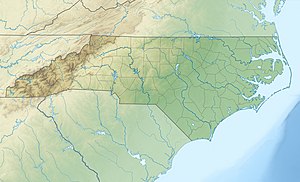|
Scotchman Creek (Deep River tributary)
Scotchman Creek is a 3.10 mi (4.99 km) long 2nd order tributary to the Deep River in Moore County, North Carolina. CourseScotchman Creek rises about 1 mile northwest of Parkland, North Carolina in Moore County and then flows northeast to join the Deep River about 2.5 miles northwest of High Falls, North Carolina.[2] WatershedScotchman Creek drains 5.33 square miles (13.8 km2) of area, receives about 48.1 in/year of precipitation, and has a wetness index of 396.73 and is about 73% forested.[4] See alsoReferences
|
||||||||||||||||||||||||||||||||||||||||||||||||||||||

